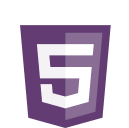Hey guys, what’s up? If you’re looking for a way to organize information, a Content Management System (CMS) is sure to help.
In this article, we’ll explain what it is, what it’s for and what difference it will make to your life – for the better!
With the growing demand for information and the need to maintain a robust online presence, it is essential to have a tool to help keep everything under control.
But what exactly is a CMS and how can it benefit your SEO strategy?
What is a Content Management System (CMS)?
You may know it as CMS, or Content Management System.
These tools make it possible to organize, edit, create and publish content. They are usually found within websites and facilitate the work of copywriters, journalists, advertisers and other professionals who work in content production. This is mainly because they don’t require a high level of technical or programming knowledge to use.
It has a much more user-friendly interface than lines and lines of code. Just imagine having to edit text by text, build page by page directly in a programming terminal.
In addition to facilitating the handling of content on the web, CMSs allow for great flexibility and customization when creating websites, landing pages, online stores, etc.
What is content management?
Content management is, as the name implies, managing and organizing content, usually multimedia. In other words, CMSs support the processing of the most common web content , such as photos, videos, infographics and even interactive materials.
This has a direct impact on the SEO strategy , since the content can be organized and optimized to be indexed in search engines.
How does a CMS work?
The Content Management System acts as a bridge between the “lay” user and complex programming languages. So you can create, edit and update a wide range of content with simple clicks, a simple interface and intuitive text editors.
This text that you are reading now is hosted within a CMS that allows me to feed it every day with new texts quickly and easily.
The main things we need to do are to stay organized, i.e. categorize the articles, keep the URLs up to date and coherent, and worry about the quality of the content.
This also allows the site to scale and for us to create a lot of content without any unforeseen problems.
What are the main features of a Content Management System (CMS)?
There are various functionalities that can be explored depending on your interest and area of expertise. Content management systems generally allow you to customize the content and layout.
Check out the main ones:
- Media library, for uploading images and videos to be used on the site;
- Customization of appearance and functionality through themes and plugins;
- Installation of plugins and extensions to increase the site’s functions;
- Stock control and sales system (if e-commerce);
- User management and control of permissions and access;
- Categorization and content labeling;
- Editing text and website code;
- Improved and optimized navigation;
- Integrated SEO tools;
- Creating and publishing pages;
- Content creation and editing:
- Scheduling publications;
- Comment moderation;
- And much more.
Why is it important to have a CMS?
In addition to all the advantages that content management systems offer, the main one is savings in costs and human resources.
I’ll explain: imagine that every time you made a blog post, you needed a programmer to develop the new page for you.
Everything would take longer and involve a much larger team, right?
A CMS facilitates this process and allows small content producers to get started, even with few resources at their disposal.
A good CMS has a positive impact on SEO in many ways:
- Ease of use: Allows anyone on the team to create and edit content without the need for a developer.
- SEO friendly: possibility of optimization for organic search. Many CMSs come with integrated tools that help with SEO optimization, such as meta descriptions, tags, and friendly URLs.
- Responsiveness: Most modern CMSs are responsive, ensuring that content is displayed correctly on mobile devices, which is an important ranking factor for Google.
- Frequent updates: Keeping the CMS up to date is essential for security and performance, which also affects SEO.
- Versatility for scalable projects: And these are just some of the possibilities.
You can create member areas, landing pages, online stores and even new formats.
- Good loading speed: The longer pages take to load – and we’re talking about differences of seconds – the greater the chance that the potential customer will close the window and look for another option on the Internet.
Read also: HTML SEO tags: what are they? What are they for?
How do you choose the best Content Management System (CMS)?
To understand which CMS is best for you, the main recommendation is to do your research. Understand what you need in terms of customization, speed and performance.
A very effective strategy is to look at reviews from other users and listen to what the community has to say about the criteria that are most important to you.
Choosing the best content management systems depends on the specific needs of your project. To choose the ideal system, consider:
- Ease of use: Evaluate the learning curve.
- SEO: Make sure the CMS has good SEO tools.
- Security: Analyze the security options and the frequency of updates.
- Flexibility and extensibility: Check the availability of plugins and themes.
- Support and community: A CMS with a large community and good technical support can be more advantageous.
To give you a boost, we’ve brought nine CMSs for you to check out. But don’t stop there, most of them are free and you can explore them before making a definitive choice.
Check out the 9 main Content Management Systems (CMS)
WordPress
WordPress is currently the world’s most popular CMS and its code is based on PHP.
As well as being a completely free option, it allows a high level of customization, allowing you to create blogs, corporate sites, online stores and more complex systems.
There is also a wide range of resources such as ready-made templates and plugins that make the manager easier to use.
As it is an open source solution, there is a large community of developers who create new features. That’s why it’s also worth taking care of your site’s security , using extra resources if necessary.
Joomla
Like WordPress, Joomla is also free and based on PHP, which gives it numerous features.
Suitable for more complex systems, it is used by large companies and institutions. In this sense, although it’s not as popular as WordPress, Joomla is an interesting and reliable alternative.
Drupal
With a large community of active developers, Drupal is a very robust content management system.
It allows a high level of customization, flexibility and security and is used by the US government to host its institutional websites.
TextPattern
For those who want simplicity and performance, TextPattern is a good option.
Although it doesn’t have as many templates and customization options, it also offers extra features such as automations and plugins.
Radiant
Radiant is a CMS based on Ruby, an easy-to-read and understand programming language similar to HTML.
It is more suitable for smaller projects .
Prestashop
PrestaShop is the open source e-commerce CMS dedicated to the development of commercial websites, which allows you to easily create an online store.
Magento
Magento is an open source e-commerce solution based on PHP and MySQL.
It integrates with a content management system (CMS) due to its content management functions.
Lumis
Lumis is a creative platform with personalized experiences.
With a high level of customization, agility and flexibility, the CMS offers all the resources needed to create unique pages.
Media Portal
Media Portal is a content management system for videos andmedia collections, with secure and fast retrieval.
What’s more, it can be integrated with social networks for distributing content, such as YouTube and Facebook. This way, you can manage the videos from your networks in one place.
Shopify
Another option for online stores, more popular in Brazil and known for its ease of use, Shopify is also an e-commerce tool.
With an integrated CMS, it is widely used by small businesses.
Conclusion
Understanding what a Content Management System (CMS) is and how to use it efficiently is essential for any SEO strategy. As we’ve seen, a CMS facilitates the creation, management and optimization of content, directly impacting a site’s visibility and performance in search engines.
Tools such as WordPress, Joomla and Drupal are just some of the options available, each with its own specific features and benefits.
By adopting a CMS, you ensure that your team can create and edit content efficiently, without having to rely on developers for every update.
In addition, most modern tools offer integrated SEO features, which help to improve indexing and ranking in search engines.
Assess your needs, explore the options available and choose the CMS that best suits your project. With the right tool, you’ll be well placed to maximize your potential and boost your business. See you in the next article! 😉





